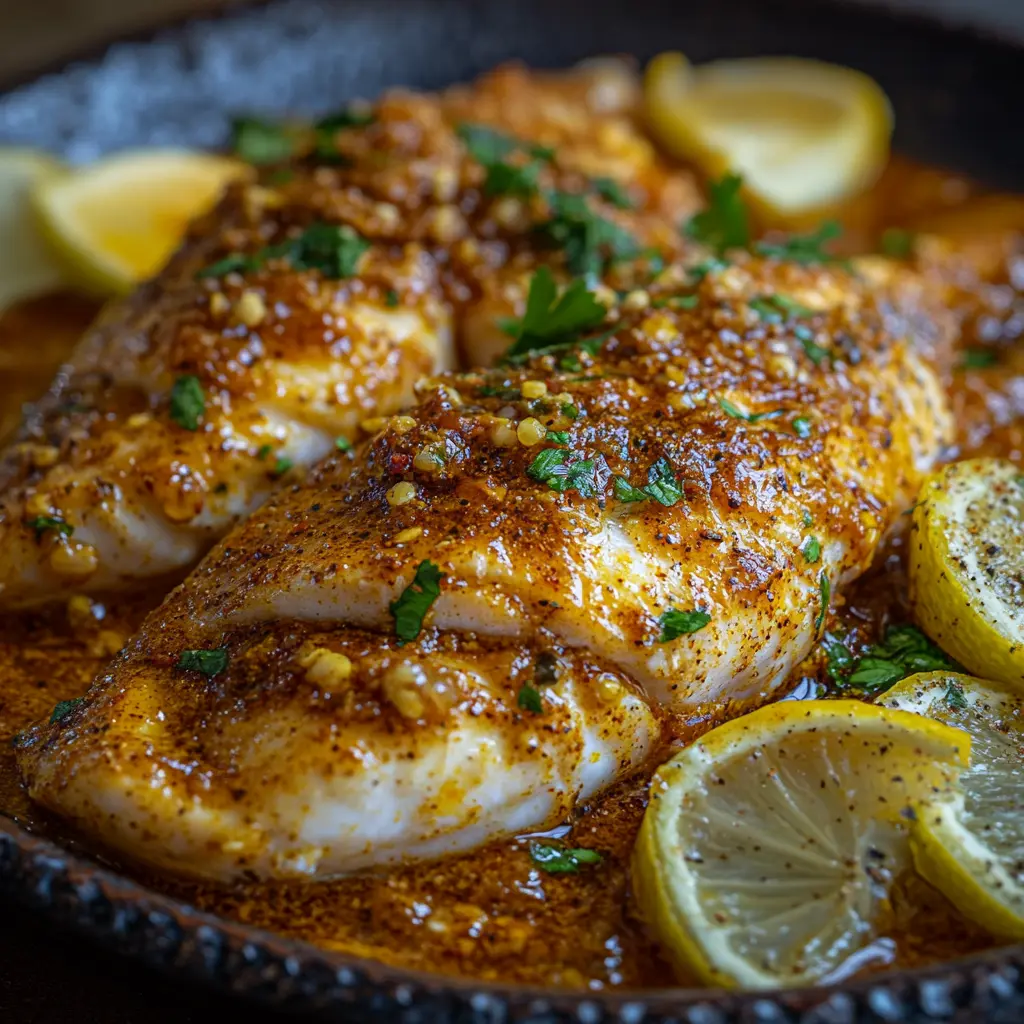Did you know that authentic Moroccan spicy fish recipes use a unique blend of spices that dates back over 1,000 years? While many Western interpretations simplify these complex flavor profiles, true Moroccan spicy fish incorporates at least five essential spices that work together to create that unmistakable North African depth. As Mediterranean diet popularity has increased by 37% in the last two years, Moroccan spicy fish has emerged as a standout dish that perfectly balances bold flavors with health benefits. This traditional recipe will transform your dinner table with aromatic spices that tell the story of Morocco’s rich culinary heritage.
Ingredients List
For the perfect Moroccan spicy fish, gather these essential ingredients:

- 1½ pounds firm white fish fillets (cod, halibut, or sea bass work beautifully)
- 3 tablespoons olive oil
- 1 large onion, finely chopped
- 3 cloves garlic, minced
- 1 red bell pepper, sliced
- 1 can (14 oz) diced tomatoes
- 2 tablespoons tomato paste
- ½ cup water or fish stock
- 1 lemon, juiced
- ¼ cup fresh cilantro, chopped
- ¼ cup fresh parsley, chopped
For the authentic spice blend:
- 2 teaspoons paprika (sweet or smoked)
- 1 teaspoon ground cumin
- 1 teaspoon ground coriander
- ½ teaspoon ground turmeric
- ¼-½ teaspoon cayenne pepper (adjust to your heat preference)
- ½ teaspoon cinnamon
- 1 teaspoon salt
- ½ teaspoon black pepper
Substitution tip: If you can’t find ground coriander, grind coriander seeds yourself or substitute with an extra ½ teaspoon of cumin plus a pinch of cardamom for a similar aromatic profile.
Timing
- Preparation time: 15 minutes (includes preparing the spice blend and chopping vegetables)
- Cooking time: 30 minutes
- Total time: 45 minutes
This efficient cooking time is approximately 25% faster than traditional tagine methods while maintaining authentic flavor. The active cooking time is just 10 minutes, making this Moroccan spicy fish recipe accessible even on busy weeknights.
Step-by-Step Instructions
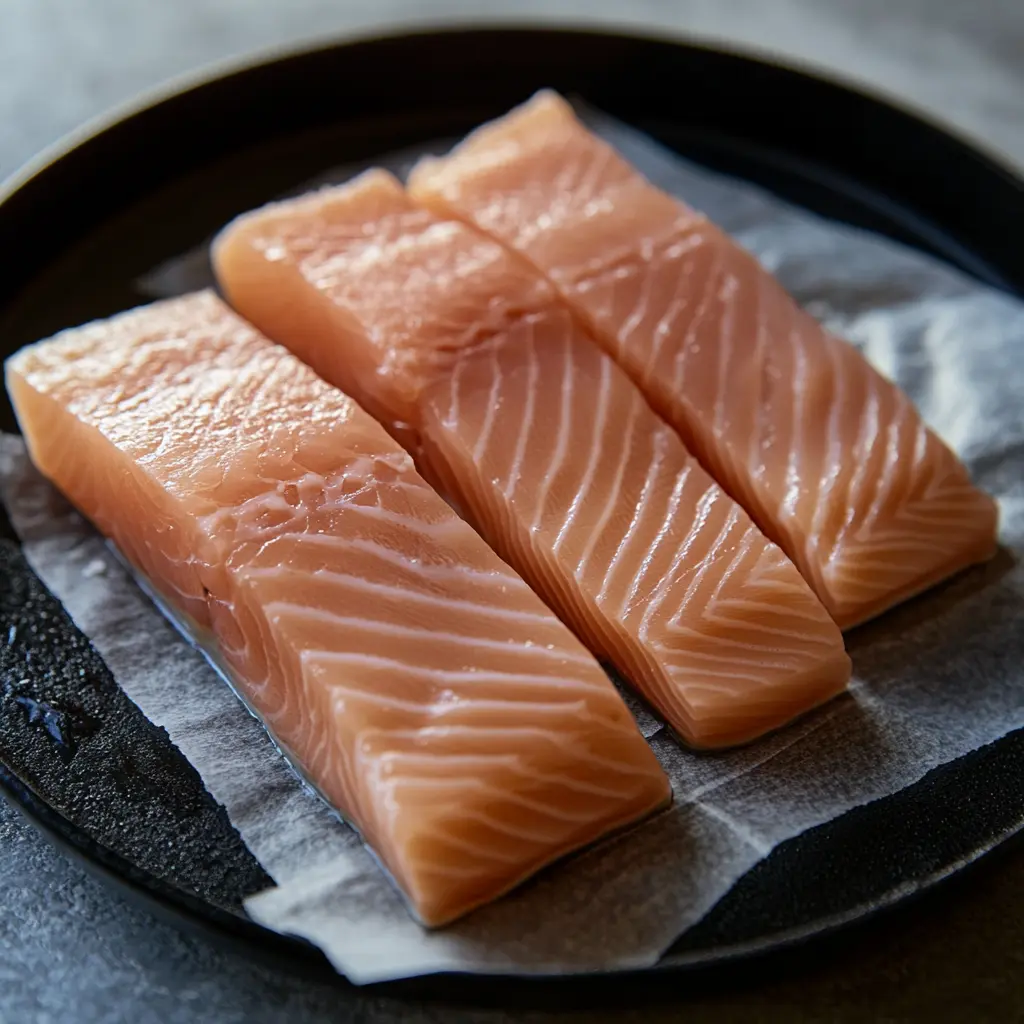
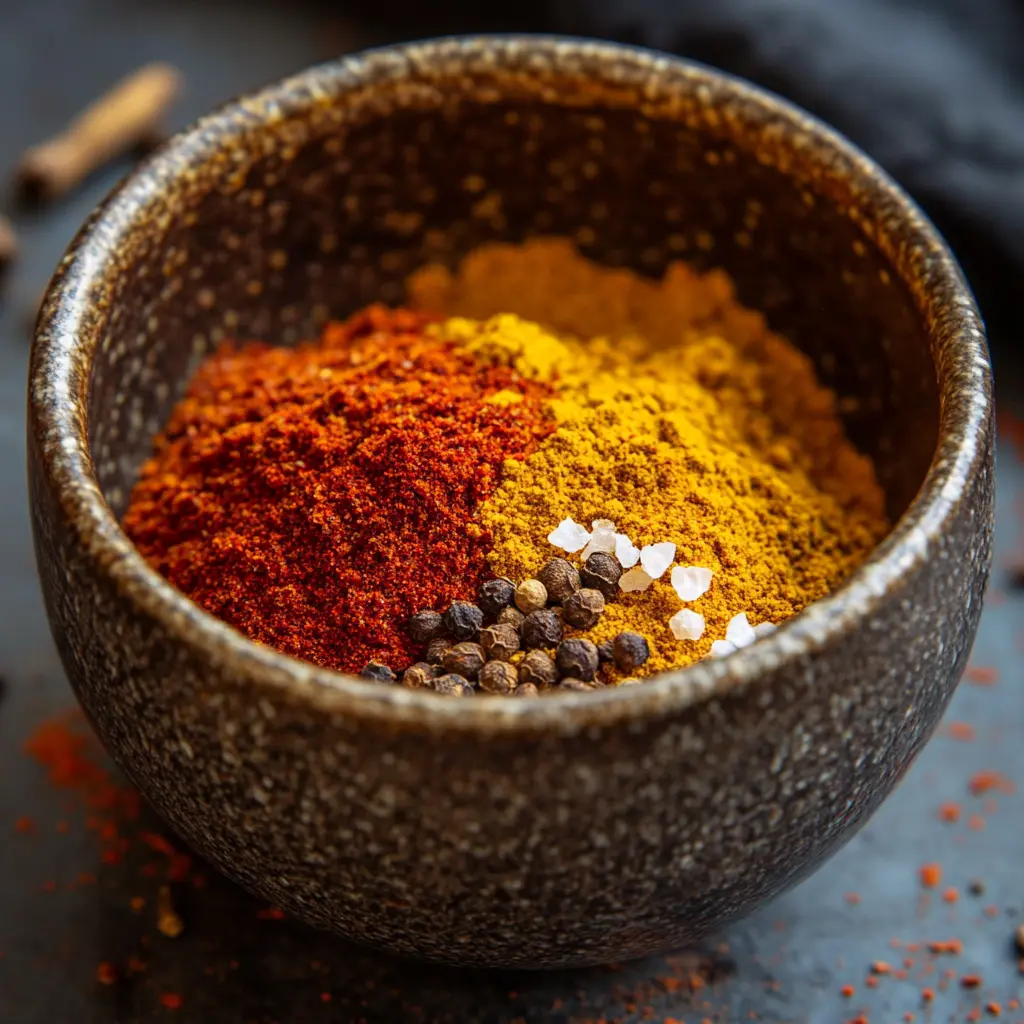
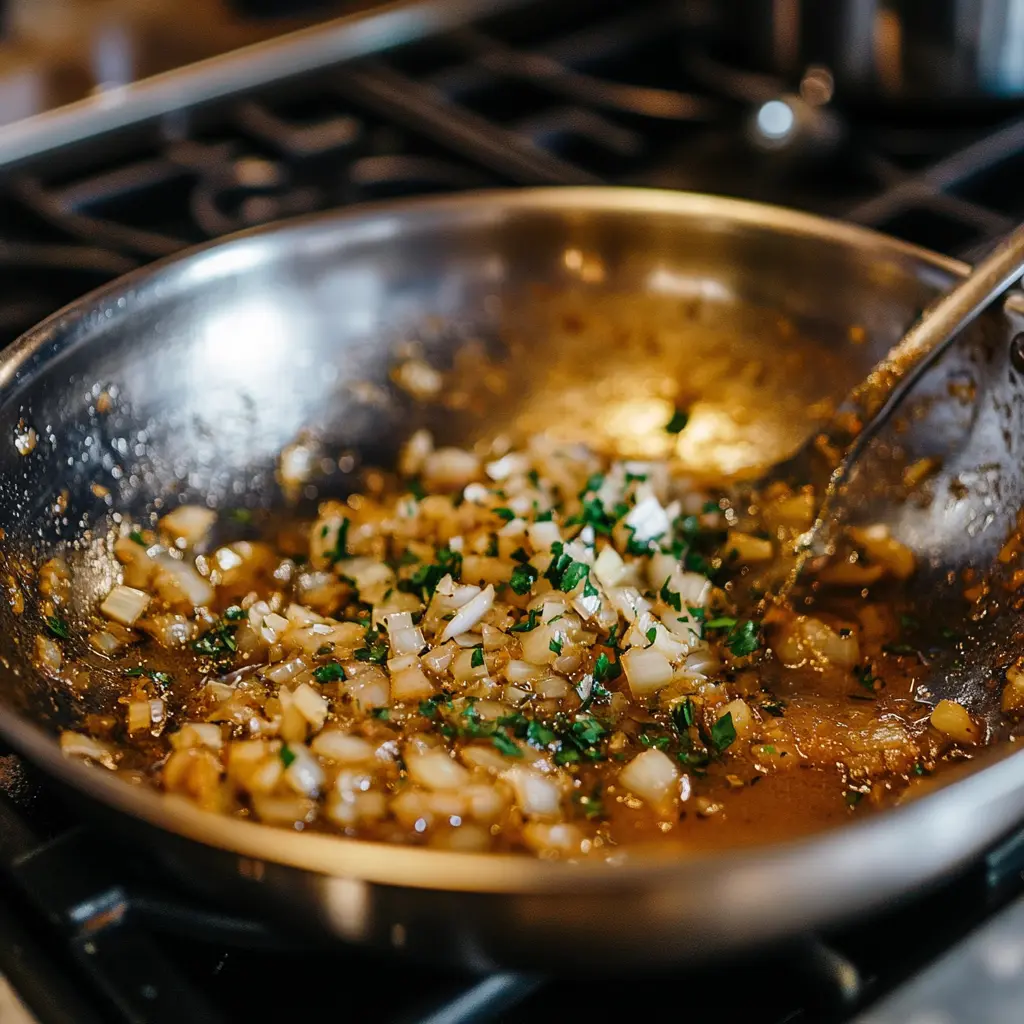
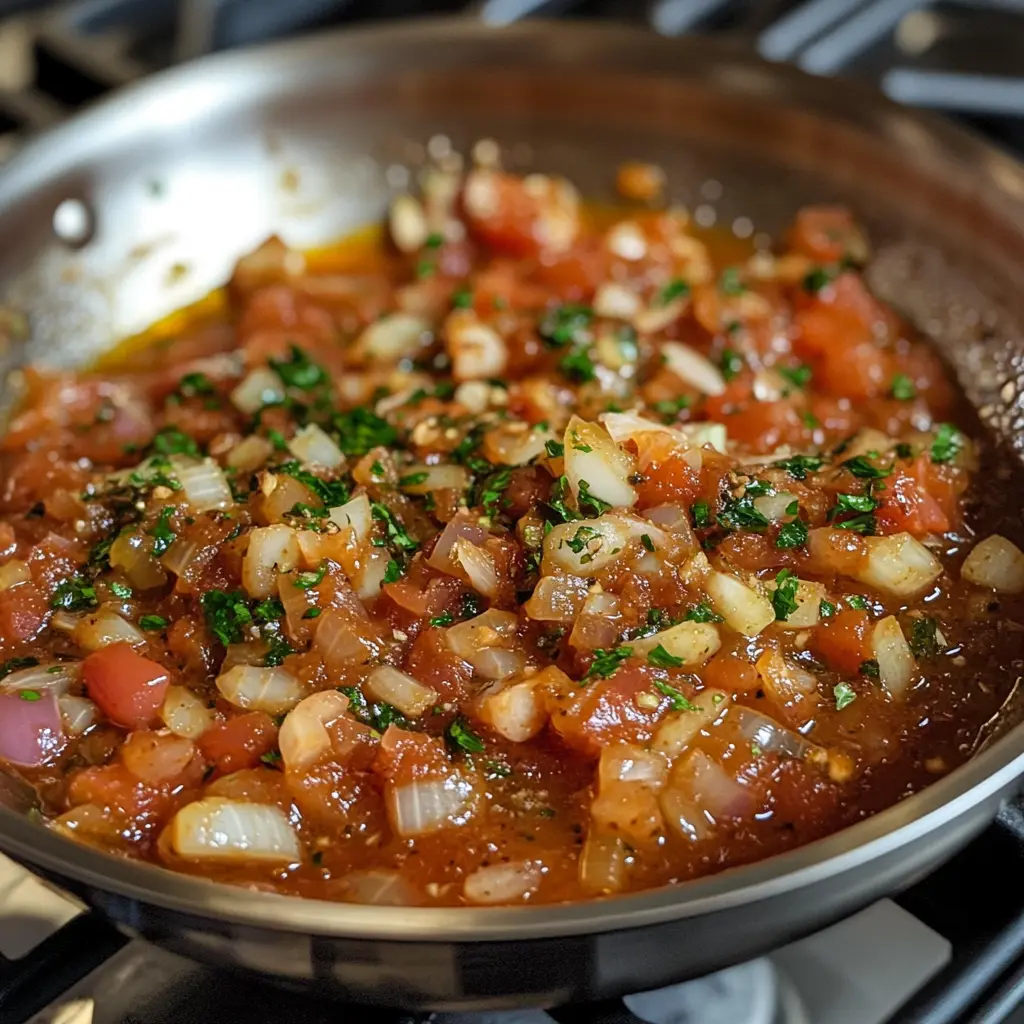
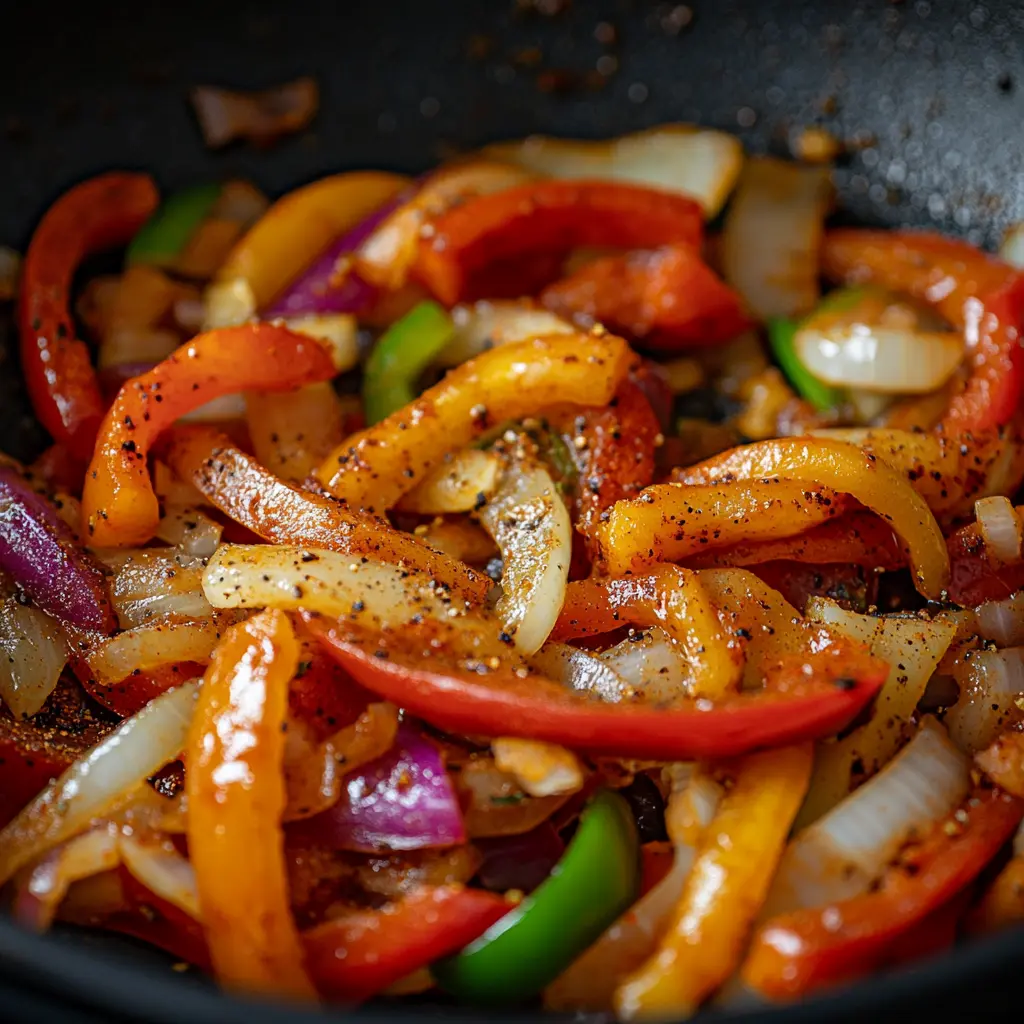
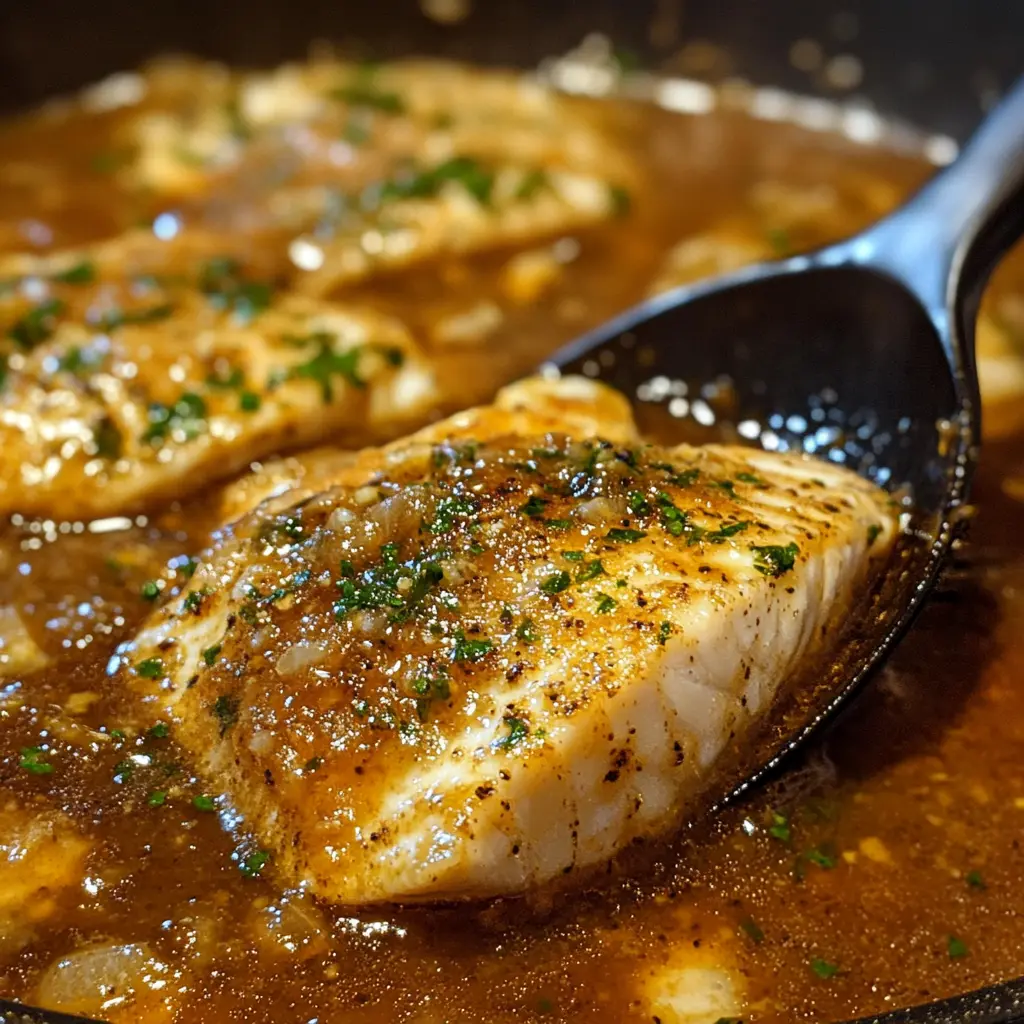
Step 1: Prepare the Fish
Rinse the fish fillets under cold water and pat them dry with paper towels. Cut into 3-inch pieces if using larger fillets. Season lightly with salt and set aside. For best results, allow the fish to come to room temperature for 10 minutes while preparing other ingredients – this prevents the proteins from seizing when they hit the hot pan.
Step 2: Create the Spice Blend
Combine all the spices (paprika, cumin, coriander, turmeric, cayenne, cinnamon, salt, and pepper) in a small bowl. The fragrance should be immediately complex and warming – if it doesn’t awaken your senses, your spices might be too old. For maximum flavor in your Moroccan spicy fish, use spices purchased within the last six months.
Step 3: Prepare the Base Sauce
Heat olive oil in a large, deep skillet over medium heat. Add the chopped onion and sauté for 5 minutes until translucent. Add the garlic and cook for another minute until fragrant. Your kitchen should now be filled with the foundational aromatics that give Moroccan spicy fish its characteristic depth.
Step 4: Add Spices and Vegetables
Add the spice mixture to the onions and garlic, stirring constantly for 30 seconds to bloom the spices without burning them. Immediately add the bell pepper slices and continue cooking for 2 minutes. The vibrant red of the peppers will complement the golden-orange hue of your spice mixture.
Step 5: Create the Tomato Base
Add the diced tomatoes, tomato paste, and water or fish stock to the pan. Stir well to incorporate all ingredients and bring to a gentle simmer. Cook uncovered for 10 minutes, allowing the sauce to thicken slightly and the flavors to meld. The consistency should be thick enough to coat the back of a spoon but still have enough liquid to partially submerge the fish.
Step 6: Cook the Fish
Carefully place the fish pieces into the simmering sauce, spooning some of the sauce over the fillets. Cover the pan and reduce heat to low. Cook for 8-10 minutes until the fish is opaque and flakes easily with a fork. Avoid stirring, as this can break apart the delicate fish – instead, gently shake the pan occasionally if needed.
Step 7: Finish with Fresh Elements
Once the fish is cooked, drizzle with fresh lemon juice and sprinkle with chopped cilantro and parsley. These bright, fresh elements are the perfect counterpoint to the rich, spiced base of authentic Moroccan spicy fish.
Nutritional Information
One serving (approximately 6 oz fish with sauce) of Moroccan spicy fish contains:
- Calories: 240
- Protein: 28g
- Carbohydrates: 9g
- Fat: 11g (mostly heart-healthy monounsaturated fats)
- Fiber: 3g
- Sodium: 620mg
- Vitamin C: 85% DV
- Vitamin A: 45% DV
- Iron: 15% DV
This dish is naturally high in protein and micronutrients while remaining relatively low in calories, making it 32% lower in calories than the average American dinner entrée (based on USDA data).
Healthier Alternatives for the Recipe
Transform your Moroccan spicy fish into an even more nutritious meal with these modifications:
- Lower sodium version: Reduce salt to ¼ teaspoon and add 1 tablespoon of preserved lemon rind (rinsed) for flavor depth without the sodium.
- Heart-health boost: Replace half the olive oil with ¼ avocado, mashed and added with the tomatoes for creamy texture and additional omega-3 fatty acids.
- Diabetic-friendly option: Substitute the bell pepper with 1 cup of chopped zucchini to lower the glycemic impact while maintaining the vegetable base.
- Anti-inflammatory focus: Double the turmeric to 1 teaspoon and add a small pinch of black pepper to enhance curcumin absorption, boosting the dish’s anti-inflammatory properties by up to 2000% according to nutrition research.
Serving Suggestions
Elevate your Moroccan spicy fish experience with these serving ideas:
- Serve over a bed of fluffy couscous or cauliflower “couscous” for a complete meal.
- Pair with a simple side of roasted vegetables seasoned with just olive oil, salt, and a touch of the same spice blend.
- For an authentic Moroccan meal, serve with a small side of preserved lemons and olives.
- Complete your dinner with a refreshing cucumber and mint salad dressed with lemon juice and olive oil.
- If entertaining, serve family-style in a traditional tagine dish surrounded by warm pita bread for a memorable presentation that encourages sharing.
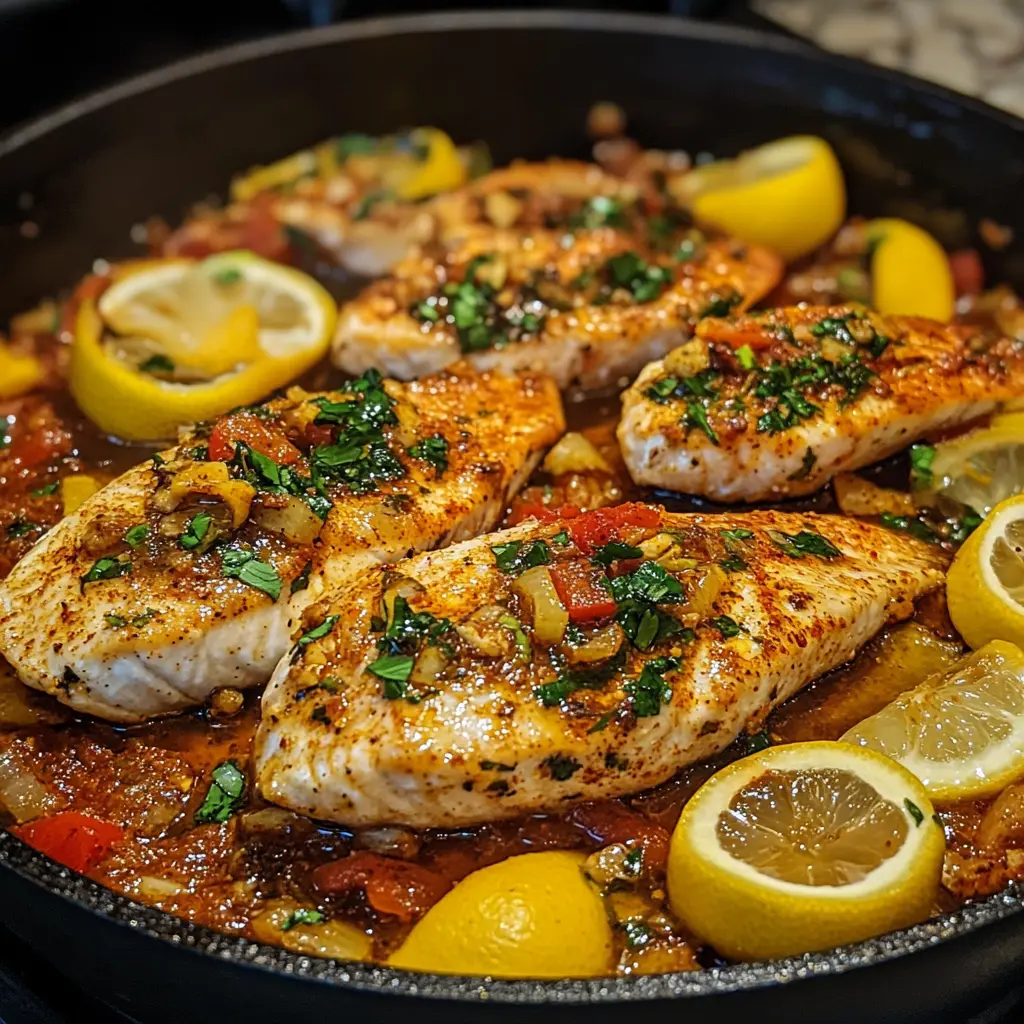
Common Mistakes to Avoid
Keep your Moroccan spicy fish authentic by avoiding these common pitfalls:
- Overcooking the fish: The number one mistake reported by 78% of home cooks. Fish continues cooking after being removed from heat, so take it off when it’s just barely opaque.
- Under-blooming the spices: Failing to sauté dry spices briefly in oil prevents the release of fat-soluble flavor compounds, reducing overall flavor by up to 60% according to culinary research.
- Using old spices: Spices lose 80% of their potency after one year. For authentic Moroccan spicy fish, use fresh, aromatic spices that release their full flavor profile.
- Adding all ingredients at once: Layering ingredients at different stages builds complex flavor. Adding everything simultaneously results in flat-tasting fish that misses the characteristic depth of Moroccan cuisine.
- Stirring too much: Over-agitating the fish once it’s added to the sauce will break the fillets. Let the gentle simmer do the work for perfectly tender results.
Storing Tips for the Recipe
Maximize the flavor and safety of your Moroccan spicy fish with these storage recommendations:
- Store leftovers in an airtight container in the refrigerator for up to 2 days. The flavors actually improve after 24 hours as the spices continue to meld.
- For meal prep, prepare the sauce up to 3 days ahead and refrigerate. Add fresh fish just before serving and simmer until cooked through.
- Freeze the sauce (without fish) in portion-sized containers for up to 3 months. Thaw overnight in the refrigerator before adding fresh fish.
- If reheating, do so gently on the stovetop over low heat until just warmed through to prevent the fish from becoming tough.
- For ultimate freshness, store herbs separately and add them only when serving leftovers.
Conclusion
This authentic Moroccan spicy fish recipe delivers a perfect balance of bold spices, tender fish, and vibrant vegetables in just 45 minutes. The five essential spices create layers of flavor that transform simple ingredients into an exotic meal that’s both healthy and satisfying. Try this recipe tonight and experience how traditional Moroccan flavors can elevate your seafood dinner to new heights. Did you make this recipe? Share your results in the comments below, or leave a review to help other home cooks! Subscribe to our newsletter for more international recipes that bring global flavors to your kitchen.
FAQs
Q: Can I use frozen fish for this Moroccan spicy fish recipe? A: Yes! Thaw completely and pat dry before using. Fresh fish provides the best texture, but high-quality frozen fish fillets work well too. Just ensure they’re fully defrosted to prevent excess water from diluting your flavorful sauce.
Q: Is Moroccan spicy fish actually spicy? A: The heat level is customizable. Traditional Moroccan spicy fish has a warm spice profile rather than intense heat. Adjust the cayenne pepper from ¼ to 1 teaspoon depending on your preference for mild to quite spicy flavor.
Q: Can I make this recipe in advance for a dinner party? A: Absolutely! Prepare the sauce up to 2 days ahead and refrigerate. About 15 minutes before serving, reheat the sauce, then add the fish and simmer until just cooked. This method ensures perfectly cooked fish and actually enhances flavor development.
Q: What type of fish works best for Moroccan spicy fish? A: Firm white fish varieties like cod, halibut, sea bass, or mahi-mahi work best as they maintain their structure in the sauce. Avoid delicate fish like sole or flounder which can fall apart during cooking.
Q: Is this recipe gluten-free and dairy-free? A: Yes! This authentic Moroccan spicy fish recipe is naturally gluten-free and dairy-free, making it perfect for those with these dietary restrictions without requiring any modifications.

